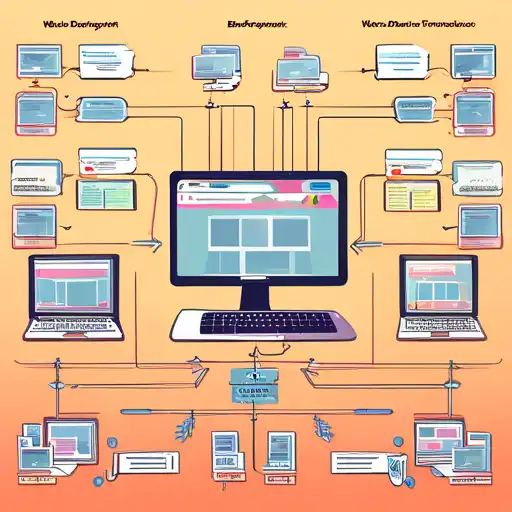Understanding Web Development Frameworks
In the ever-evolving world of web development, choosing the right framework is crucial for building efficient, scalable, and maintainable websites and applications. With a plethora of options available, developers often find themselves at a crossroads, trying to determine which framework best suits their project needs.
What Are Web Development Frameworks?
Web development frameworks are platforms designed to support the development of web applications, including web services, web resources, and web APIs. They provide a standard way to build and deploy web applications on the World Wide Web.
Types of Web Development Frameworks
There are primarily two types of web development frameworks: frontend (or client-side) and backend (or server-side). Frontend frameworks focus on the user interface and user experience, while backend frameworks deal with server-side logic, databases, and application integration.
Key Factors to Consider When Choosing a Framework
Selecting the right web development framework involves considering several factors to ensure it aligns with your project requirements and team expertise.
Project Requirements
Understanding the scope and requirements of your project is the first step in choosing a framework. Consider the size of the project, the expected traffic, and the complexity of the features you plan to implement.
Community and Support
A strong community and good documentation can significantly ease the development process. Frameworks with active communities offer extensive resources, plugins, and tools to help developers overcome challenges.
Performance and Scalability
Performance is a critical factor, especially for applications expecting high traffic. Evaluate the framework's ability to handle requests efficiently and scale as your user base grows.
Popular Web Development Frameworks in 2023
Here's a look at some of the most popular web development frameworks that have gained traction among developers worldwide.
Frontend Frameworks
- React.js - A JavaScript library for building user interfaces, known for its virtual DOM feature.
- Vue.js - A progressive framework for building UIs, focusing on simplicity and flexibility.
- Angular - A platform and framework for building single-page client applications using HTML and TypeScript.
Backend Frameworks
- Node.js - A JavaScript runtime built on Chrome's V8 JavaScript engine, enabling server-side scripting.
- Django - A high-level Python web framework that encourages rapid development and clean, pragmatic design.
- Ruby on Rails - A server-side web application framework written in Ruby, following the MVC pattern.
Making the Right Choice
Choosing the right web development framework is a balance between your project's needs, your team's skills, and the long-term maintainability of the application. Experiment with different frameworks, consult with peers, and consider future trends before making a decision.
For more insights into web development, check out our articles on Web Development Trends and Frontend vs Backend Development.
